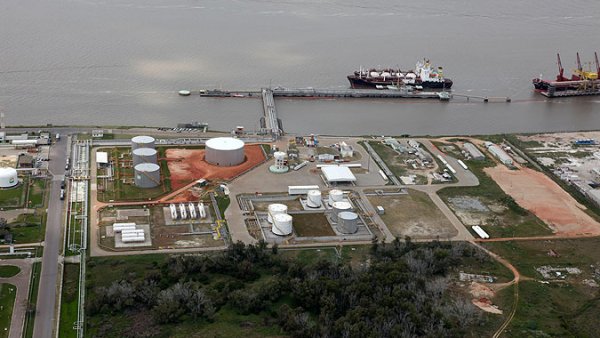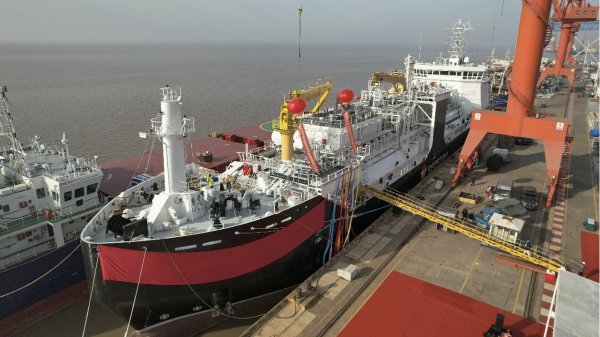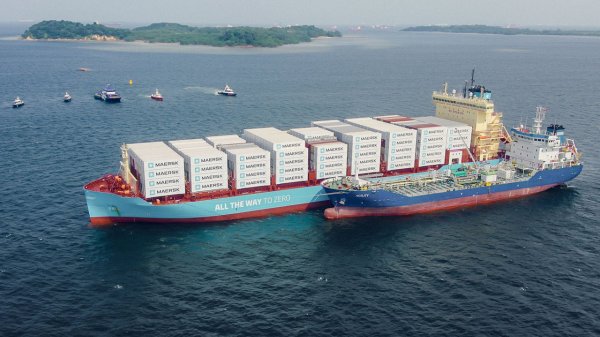New ISO marine fuel standard ushers in specs for biofuel blends
Distillate grades DFA, DFZ and DFB permit up to 7% fatty acid methyl ester (FAME).
The International Organization for Standardization (ISO) has published a revised edition of its ISO 8217 specifications for marine fuels, which incorporates new class 'F' grades for biofuels to be blended into marine distillates.
In the new ISO 8217:2017 global standard, which replaces the fifth edition (ISO 8217:2012), the new grades DFA, DFZ and DFB have been added to permit up to 7 percent fatty acid methyl ester (FAME). FAME has physical properties similar to those of conventional diesel, but is also non-toxic and biodegradable.
Other changes to marine distillate standards include the reduction of sulphur content for DMA and DMZ grades to a maximum of 1 percent, and maximum sulphur levels for DMB being lowered to 1.5 percent.
Additionally, the permitted level of biodiesel in DMA grades has been increased to 0.50 percentage weight in ISO 8217:2017, up from a suggested level of 0.10 percent in the fifth edition. Also, cloud point and cold filter plugging point (CFPP) characteristics have been added to winter grades of DMA and DMZ.
Speaking to S&P Global Platts as member of the working group on ISO 8216/8217, Monique Vermeire, fuels technologist at Chevron, said the FAME percentage will enable automotive diesel containing 10 ppm sulphur to be blended into marine distillates.
Vermeire added: "I hope it [ISO 8217:2017] will pick up very fast because of the cloud point requirements. For distillates, we had only the pour point defined, but sometimes the paraffins were falling out, settling, especially when it was not heated. So now, adding cloud point and CFPP lets the operator know in advance if it needs heating."
In total, the new standard specifies seven categories of distillate fuels, one of which is for diesel engines used for emergency purposes.
No changes have been made to residual fuel oil standards in the latest edition of ISO 8217. It specifies six categories of residual fuels: RMK, RMG, RME, RMD, RMB and RMA.
The new specifications were prepared by ISO's Technical Committee ISO/TC 28, Subcommittee SC 4, Classifications and specifications.
In the new ISO 8217:2017 global standard, which replaces the fifth edition (ISO 8217:2012), the new grades DFA, DFZ and DFB have been added to permit up to 7 percent fatty acid methyl ester (FAME). FAME has physical properties similar to those of conventional diesel, but is also non-toxic and biodegradable.
Other changes to marine distillate standards include the reduction of sulphur content for DMA and DMZ grades to a maximum of 1 percent, and maximum sulphur levels for DMB being lowered to 1.5 percent.
Additionally, the permitted level of biodiesel in DMA grades has been increased to 0.50 percentage weight in ISO 8217:2017, up from a suggested level of 0.10 percent in the fifth edition. Also, cloud point and cold filter plugging point (CFPP) characteristics have been added to winter grades of DMA and DMZ.
Speaking to S&P Global Platts as member of the working group on ISO 8216/8217, Monique Vermeire, fuels technologist at Chevron, said the FAME percentage will enable automotive diesel containing 10 ppm sulphur to be blended into marine distillates.
Vermeire added: "I hope it [ISO 8217:2017] will pick up very fast because of the cloud point requirements. For distillates, we had only the pour point defined, but sometimes the paraffins were falling out, settling, especially when it was not heated. So now, adding cloud point and CFPP lets the operator know in advance if it needs heating."
In total, the new standard specifies seven categories of distillate fuels, one of which is for diesel engines used for emergency purposes.
No changes have been made to residual fuel oil standards in the latest edition of ISO 8217. It specifies six categories of residual fuels: RMK, RMG, RME, RMD, RMB and RMA.
The new specifications were prepared by ISO's Technical Committee ISO/TC 28, Subcommittee SC 4, Classifications and specifications.

|
VARO Energy expands renewable portfolio with Preem acquisition
All-cash transaction expected to complete in the latter half of 2025. |
|
|
|
||

|
NYK trials biofuel in milestone coal carrier test
Vessel is used to test biofuel for domestic utility company. |
|
|
|
||

|
H-Line Shipping orders LNG bunkering vessel
Vessel with 18,000-cbm capacity to run on both LNG and MDO. |
|
|
|
||

|
How to engineer and manage green shipping fuels | Stanley George, VPS
Effective management strategies and insights for evolving fuel use. |
|
|
|
||

|
Swedish government bans scrubber wastewater discharges
Discharges from open-loop scrubbers to be prohibited in Swedish waters from July 2025. |
|
|
|
||

|
MAN Energy Solutions achieves 100% load milestone for ammonia engine
Latest tests validate fuel injection system throughout the entire load curve. |
|
|
|
||

|
Petrobras secures ISCC EU RED certification for B24 biofuel blend at Rio Grande
Blend consisting of 24% FAME is said to have been rigorously tested to meet international standards. |
|
|
|
||

|
Stolt-Nielsen to fully control Avenir LNG with acquisition
Share purchase agreement to buy all shares from Golar LNG and Aequitas. |
|
|
|
||

|
Bureau Veritas supports launch of CIMC SOE's LNG bunkering vessel
Handover of Seaspan Energy's cutting-edge 7,600-cbm vessel completed. |
|
|
|
||

|
Methanol as a marine fuel | Steve Bee, VPS
How environmental legislation has driven the development of low-sulphur fuels and methanol-ready ships. |
|
|
|
||
Related Links
- · New ISO standard for LNG bunkering [Insights]

